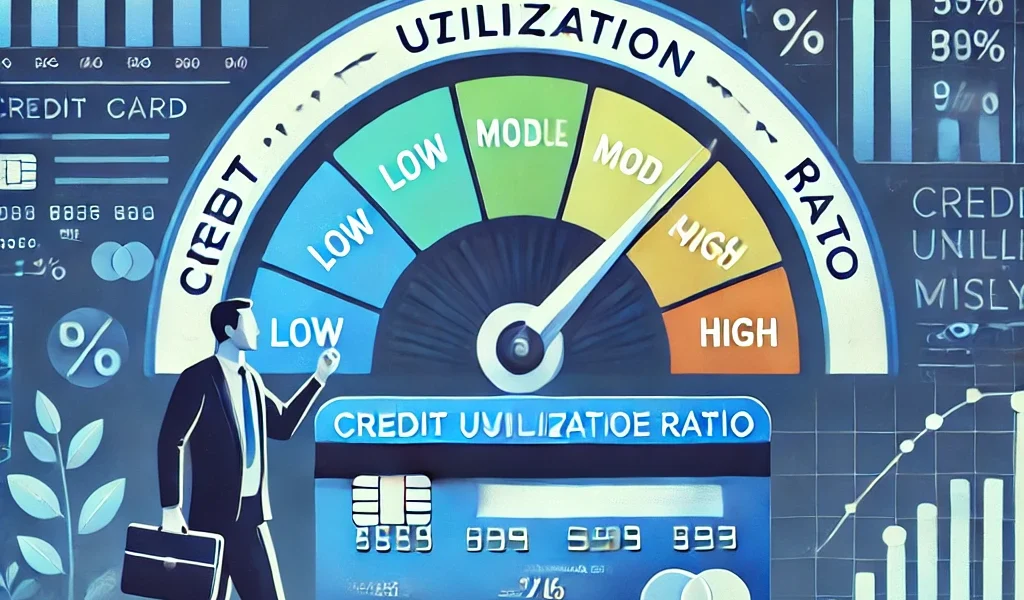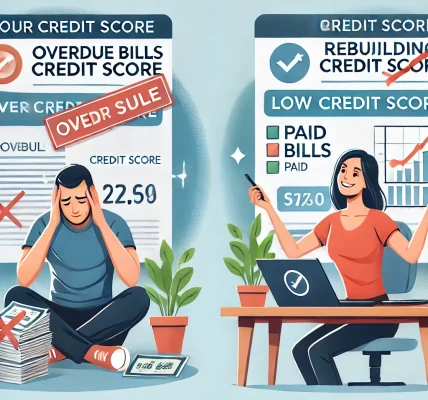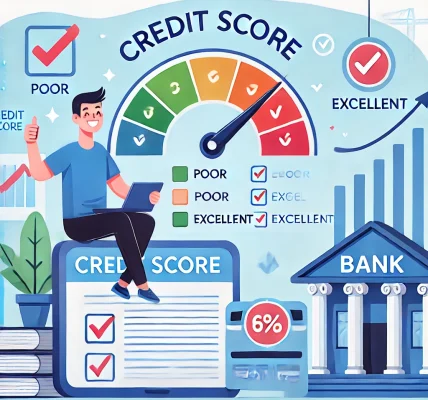Introduction
Your credit score is a crucial financial metric that determines your ability to borrow money, get approved for credit cards, and secure favorable interest rates. One of the most significant factors influencing your credit score is your credit utilization ratio. Despite its importance, many consumers don’t fully understand what it is, how it works, and how to manage it effectively.
In this comprehensive guide, we’ll break down the concept of credit utilization, explain how it affects your credit score, and provide actionable strategies to optimize your ratio for financial success.
What is Credit Utilization Ratio?
Credit utilization ratio refers to the percentage of your total available credit that you are currently using. It is a key factor in determining your creditworthiness, as lenders view high utilization as a sign of potential financial stress.
How is Credit Utilization Ratio Calculated?
To calculate your credit utilization ratio, use the following formula:
For example, if you have a total credit limit of $10,000 across all your credit cards and you have a balance of $3,000, your credit utilization ratio would be:
A lower credit utilization ratio indicates responsible credit management, while a high ratio suggests that you might be relying too much on credit, which can negatively impact your score.
Why Does Credit Utilization Ratio Matter?
Credit utilization accounts for 30% of your FICO score, making it the second most important factor after payment history (35%). High utilization can signal financial risk to lenders, while a lower utilization ratio can boost your score and improve your chances of loan approval.
Key Reasons Why Credit Utilization Matters:
- Influences Your Credit Score: Keeping your utilization low can improve your credit score, making you more attractive to lenders.
- Impacts Loan and Credit Card Approvals: Lenders prefer borrowers who manage their credit responsibly.
- Affects Interest Rates: A better credit score can help you qualify for lower interest rates, saving you money in the long run.
- Reflects Financial Responsibility: A lower utilization ratio indicates that you are not overly reliant on credit, which reassures lenders.
What is the Ideal Credit Utilization Ratio?
Most financial experts recommend keeping your credit utilization ratio below 30%, but for optimal results, a ratio of under 10% is ideal. Here’s how different utilization levels may impact your score:
- 0% – 10%: Excellent – Indicates strong credit management.
- 10% – 30%: Good – Generally favorable but could be improved.
- 30% – 50%: Fair – May start negatively affecting your score.
- Above 50%: Poor – Can significantly lower your credit score and raise red flags for lenders.
Maintaining a utilization ratio below 10% can provide the most benefit to your credit score and borrowing potential.
How Credit Utilization Affects Your Credit Score
1. High Utilization Can Lower Your Credit Score
- If your credit utilization ratio is consistently above 30%, credit bureaus may view you as a higher-risk borrower, leading to a lower credit score.
2. Low Utilization Can Boost Your Score
- A lower utilization ratio indicates responsible credit use, which helps improve your credit score over time.
3. Maxing Out Credit Cards Hurts Your Score
- Using close to 100% of your available credit can make it appear that you are financially overextended, negatively impacting your credit score.
4. Paying Off Balances Regularly Can Improve Your Score
- Paying off your credit card balances before the statement closing date can reduce the reported utilization and boost your score.
How to Manage and Lower Your Credit Utilization Ratio
1. Pay Down Your Balances Frequently
- Make multiple payments throughout the month to keep your balances low.
- Aim to pay off your balances in full whenever possible.
2. Request a Credit Limit Increase
- Increasing your credit limit without increasing your spending can lower your utilization ratio.
- Example: If your limit increases from $5,000 to $10,000 and your balance remains at $1,500, your utilization drops from 30% to 15%.
3. Spread Balances Across Multiple Cards
- Instead of maxing out one card, use multiple credit cards with lower balances to keep utilization lower on each.
4. Use a Personal Loan to Pay Off High Credit Card Debt
- A debt consolidation loan can help reduce your credit utilization since installment loans don’t factor into utilization calculations.
5. Set Up Balance Alerts
- Most banks allow you to set alerts when your balance reaches a certain percentage of your credit limit.
- This helps you stay aware and make timely payments before exceeding 30% utilization.
6. Avoid Closing Old Credit Accounts
- Keeping old accounts open maintains a higher total credit limit, which helps keep utilization lower.
- Example: Closing a credit card with a $5,000 limit can increase your overall utilization ratio if you have existing debt.
7. Monitor Your Credit Regularly
- Use free credit monitoring tools to track your utilization ratio and ensure it stays within a healthy range.
- Websites like Credit Karma, Experian, and Credit Sesame provide real-time updates on your credit usage.
Myths vs. Facts About Credit Utilization
Myth 1: Carrying a Small Balance Helps Your Credit Score
- Fact: Paying off your balance in full each month is the best way to maintain a strong credit score.
Myth 2: You Should Keep Utilization at Exactly 30%
- Fact: Keeping utilization below 10% is ideal for maximizing your score.
Myth 3: Closing a Credit Card Improves Your Score
- Fact: Closing a credit card can increase your utilization ratio, potentially lowering your score.
Myth 4: Using Your Full Credit Limit is Beneficial
- Fact: Maxing out your credit cards can significantly lower your credit score and hurt your borrowing potential.
Conclusion
Understanding and managing your credit utilization ratio is essential for maintaining a healthy credit score and financial stability. Keeping your utilization low, making timely payments, and monitoring your credit regularly can help improve your creditworthiness and make borrowing more affordable.
By implementing the strategies in this guide, you can take control of your credit utilization, boost your credit score, and secure better financial opportunities.
Legal Disclaimer: This article is for informational purposes only and does not constitute financial or legal advice. Always consult a financial professional before making credit-related decisions.




